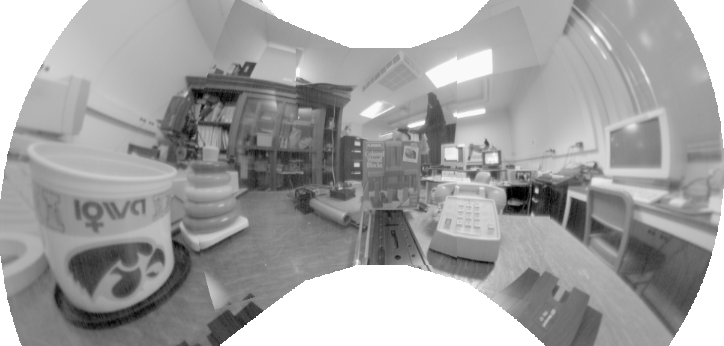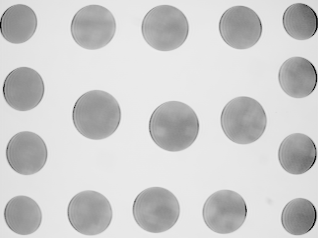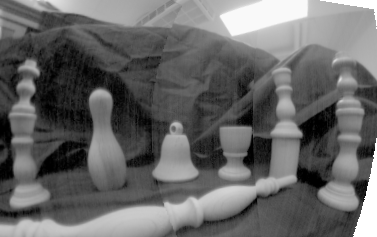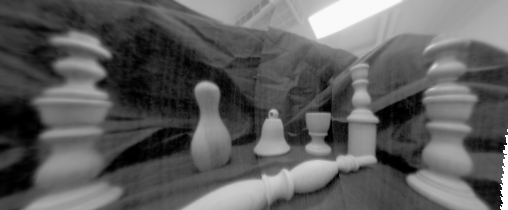
For our ideal wide-angle imaging model, we use stereographic projection, a type of fisheye projection, rather than perspective. This projection is conformal, so that small objects keep the same shape no matter where they are located in the field of view. Wide fields of view can be represented without substantial expansion or distortion of peripheral regions, as in the following image with a 240 degree horizontal field of view (created using a wide-angle lens and camera rotation).

Traditional perspective perspective works well for narrow-angle images. However, it does a poor job of representing fields of view larger than about 140 degrees because peripheral regions are expanded too much relative to central regions. Images created by perspective lenses (as opposed to composites made from several images) are effectively cropped at 120-140 degrees by a cos^4 drop-off in intensity. Furthermore, the shape of peripheral objects is distorted, as illustrated in the following 160 degree images. For this reason, fisheye projections are used to design 35mm lenses with a field of view >= 140 degrees, and C-mount lenses with fields of view >= about 60-80 degrees.

In traditional terminology, the perspective image is normal and the stereographic image is "distorted." Compare the above two images: which one would you consider more "distorted" than the other?
Stereographic projection is also a closer approximation to the behavior of our video camera lenses than perspective projection. These include all the C-/CS-mount lenses for a 1/2" CCD camera, with field of view above about 70 degrees, that our lens supplied believed to represent distinct optical designs, as well as several lenses with smaller fields of view. Interestingly, the lens with the widest field of view is closest to perspective, and we found the worst deviation from perspective in a lens with only a 50 degree field of view. In images taken with this lens, spheres appear as ellipses whose major axes lie perpendicular to, rather than along, to the rays from the image center.

In addition to the distortion of area and shape, the perspective image is missing many of the objects visible in the stereographic image. It is not possible to expand this image to include the child's ring-stacking toy on the left and the terminal on the right (let alone the other objects), because this requires a 195 degree field of view. The area and shape distortion in perspective projection increases very fast after 160 degrees; after 180 degrees, perspective projection is no longer one-to-one.
3D local symmetries project onto 2D local symmetries in stereographic images, although the axes of long straight objects may be bent. This is illustrated by the following image with a 135 degree field of view.

In perspective images, however, local symmetries are only preserved near the center of the image. In the periphery, local features on one side of the symmetry may be expanded and/or sheared relative to the corresponding local features on the other side.

Papers related to this work
This page is maintained by Margaret Fleck.